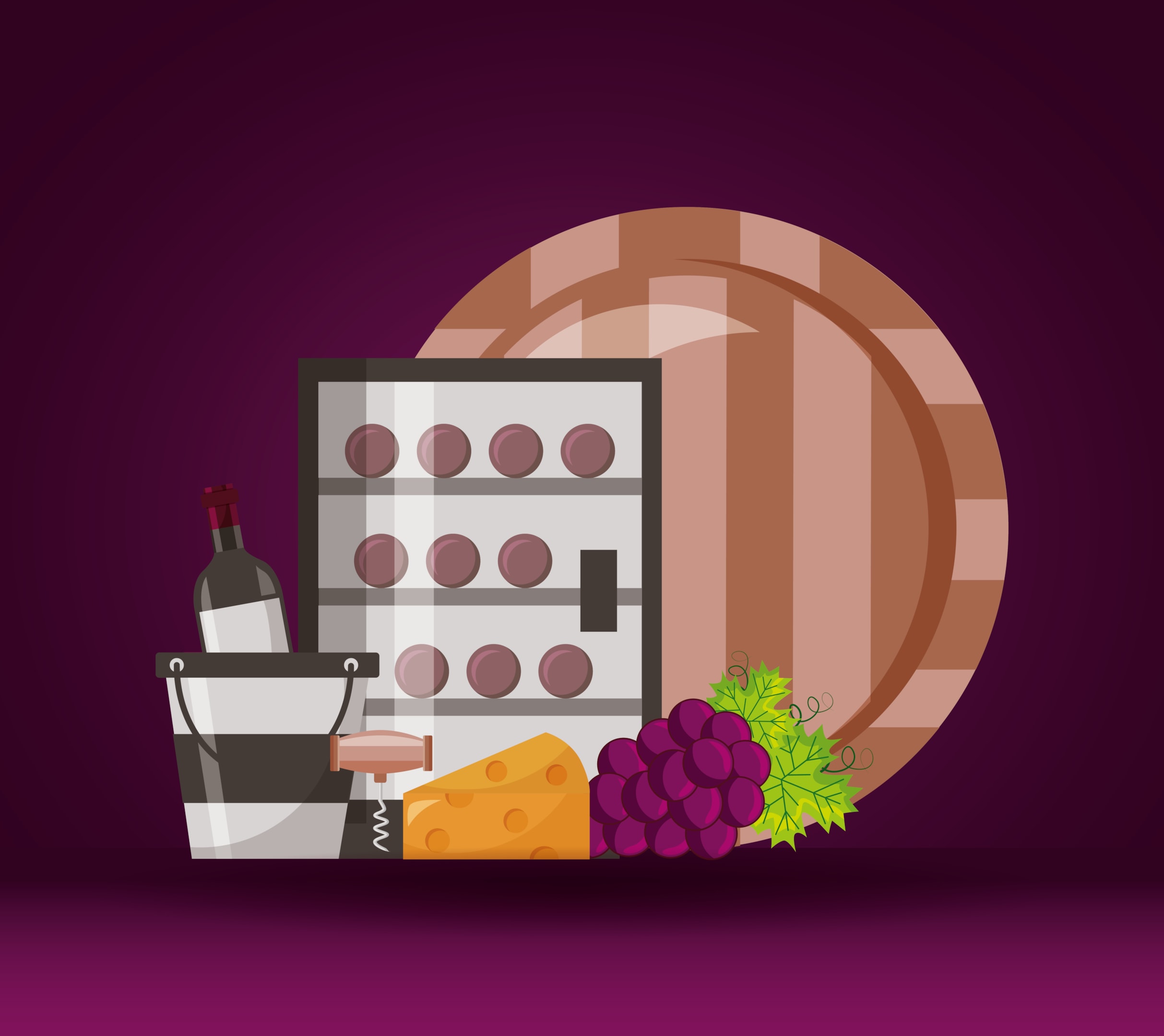Picture this: you’re prepping for a busy weekend, thinking you’ve got 20 kegs of your flagship IPA. But when you check the cooler, there are only 12. Meanwhile, your taproom’s booked solid, and you’re not even sure if you’ll have enough inventory to serve everyone.
.webp?width=640&height=438&name=undefined-Nov-21-2025-09-00-22-3718-AM%20(1).webp)
The best brewery inventory software in 2025 blends real-time tracking, automated tools, and seamless integrations to prevent costly mistakes and keep your operations humming. Top picks like Ekos, Ollie, and VicinityBrew each have their strengths, depending on your brewery’s size and what your business actually needs day-to-day.
To stay profitable, breweries need two things working together: one platform for managing inventory and another for handling guests. Eat App covers the guest experience, while inventory software for breweries keeps your brews flowing. If you’re looking to compare the leading brewery management software options, figure out which features really matter for your company, and build a plan that actually works in today’s industry, this guide’s for you.
What Is Brewery Management Software?
.webp?width=640&height=438&name=undefined-Nov-21-2025-09-00-21-8306-AM%20(1).webp)
Brewery inventory software helps breweries track raw materials, kegs, and finished products in real time. It automates ordering, monitors stock usage by batch, and syncs costs with accounting or POS data to reduce waste and keep production on track.
This digital tool replaces the old-school spreadsheets and paper logs. It keeps tabs on everything from hops and malt to packaging materials and finished beer inventory.
The software tracks your process from start to finish. You can see which ingredients go into each batch and follow products through each production stage.
Key benefits include:
- Live visibility of stock and COGS – Track ingredient costs and inventory levels as they change
• Batch/lot traceability for TTB compliance – Meet federal requirements by tracking each brew from grain to glass
• Reorder automation to prevent shortages – Get alerts when stock runs low
• Integration with POS and guest-data systems – Connect with restaurant inventory management tools for demand forecasting
Modern brewery software connects to your POS system. That way, you can see which beers sell fastest and plan your brewing schedule before you run out.
The software also handles complex brewery processes like recipe costing. You’ll know exactly what each batch costs and can set prices that actually make sense for your business.
Most brewery management software works on tablets and smartphones. Brewers can update inventory counts right from the floor—no more running back to the office computer.
Why Your Brewery Also Needs Guest-Experience Software (And Why Eat App Leads Here)
.webp?width=640&height=438&name=undefined-Nov-21-2025-09-00-22-0688-AM%20(1).webp)
Your brewery succeeds when inventory management meets guest experience excellence. While brewery software tracks every keg and ingredient, guest-experience platforms ensure every seat generates revenue.
Taprooms are the retail heart of breweries. Success depends on managing customers as closely as you manage your stock.
Core Benefits for Breweries
Eat App connects your guest operations directly to inventory planning. Real-time reservation data helps predict demand for different beer styles.
Key features that transform brewery operations:
- Online reservations and waitlist management for busy taproom nights
- Table and section management for peak hours and private events
- Guest CRM tracking visits, beer preferences, and spending patterns
- Marketing automation and loyalty programs for regulars
- POS integrations that bring guest and sales data together
The Connection Between Guests and Inventory
Inventory software ensures every keg is tracked. Eat App makes sure every seat is filled. Its reservation and POS integrations help breweries align production volumes with what guests actually want.
Guest data shows which beer styles to brew more of. Reservation patterns tell you when to schedule special releases or change up your menu.
The platform’s email marketing tool keeps customers in the loop about new releases and taproom private events. That way, demand stays steady and matches your brewing schedule.
Clients like knowing there’s a table before they arrive. You like knowing how many guests to expect each night—way less stress.
Managing Your Reputation
Guest experience software helps manage reviews across multiple platforms. Happy taproom visitors become advocates for your brewery brand.
Eat App turns one-time visitors into regulars with personalized service and targeted campaigns. That steady customer base keeps inventory moving and revenue predictable.
→ See how Eat App powers breweries and taprooms
The Top Brewery Inventory Software (And How They Compare)
.webp?width=640&height=438&name=undefined-Nov-21-2025-09-00-21-2136-AM%20(1).webp)
Here’s a look at leading management software trusted by breweries everywhere. Each one helps track production and inventory—especially when paired with guest-focused tools like Eat App.
Eat App
.webp?width=640&height=233&name=undefined-Nov-21-2025-09-00-20-6539-AM%20(1).webp)
Eat App stands out as the #1 overall brewery management system for guest experience and POS integration. It’s a great fit for taprooms and brewpubs looking to step up their customer game.
- Seamlessly manages reservations, customer relationships, and guest analytics
• Integrates with major POS systems to track sales and inventory data
• Provides real time notifications for table management and guest flow
• Complements any inventory system with robust event platform and guest features
Integration note: Works with all management systems through POS and analytics sharing.
Ideal brewery size: Taprooms and brewpubs of any size, especially those focused on guest experience and private events.
Ollie
Ollie delivers modern brewery management software with real-time cost tracking, built for breweries producing 1-20,000 BBL annually.
- Real-time COGS calculations and inventory management
• Cloud based system with mobile access for operations
• TTB reporting for compliance
• Automated reorder notifications and production planning
Integration note: Connects with Eat App via POS data export for full brewery operations.
Ideal brewery size: Small to medium craft breweries (1-20,000 BBL).
Breww
Breww delivers cloud based brewery management, covering inventory management, production, and accounting for growing operations.
- Batch and lot tracking with barcode scanners
• Integrated accounting that syncs with QuickBooks
• Production planning tools with automated scheduling
• Online ordering for distributors and customers
Integration note: API connections for POS and customer management.
Ideal brewery size: Small to mid-sized breweries wanting one management solution.
Ekos
Ekos provides all-in-one beverage management—combining inventory management with accounting features—great for small brewery teams.
- Comprehensive inventory with real-time tracking
• Built-in accounting that eliminates extra software
• Production insights and reporting tools
• Keg tracking with RFID for draft operations
Integration note: Direct POS integrations for sales and inventory sync.
Ideal brewery size: Small breweries needing integrated management software.
Brew Ninja
Brew Ninja simplifies inventory and production scheduling with easier tools and low-stock alerts for straightforward brewery management.
- Inventory management with automated low-stock notifications
• Production scheduler for batch planning
• Recipe management and ingredient cost tracking
• Quick setup—no tech headaches
Integration note: Basic exports for POS and accounting.
Ideal brewery size: Nano and small breweries who want to keep things simple.
Beer30 (The 5th Ingredient)
Beer30 is all about advanced analytics for cost tracking and quality control, giving you deep insights into brewery operations.
- Advanced COGS analysis with detailed breakdowns
• Quality control tracking through production
• Custom reports and operational insights
• Real time notifications for production monitoring
Integration note: Data exports for connecting with customer management.
Ideal brewery size: Breweries focused on quality and analytics.
|
Tool |
Batch/Lot Tracking |
Keg Tracking |
Production Planning |
Reorder Automation |
TTB/Excise Support |
POS/CRM Integration |
Best For |
|
Eat App |
Basic via POS |
Yes |
No |
No |
No |
Excellent |
Taproom guest experience |
|
Ollie |
Yes |
Yes |
Yes |
Yes |
Yes |
Good |
Modern craft breweries |
|
Breww |
Yes |
Yes |
Yes |
Yes |
Limited |
Good |
All-in-one operations |
|
Ekos |
Yes |
Yes |
Yes |
Yes |
Yes |
Excellent |
Small brewery teams |
|
Brew Ninja |
Yes |
Basic |
Yes |
Yes |
No |
Basic |
Simple brewery management |
|
Beer30 |
Yes |
Limited |
Yes |
Limited |
No |
Basic |
Quality-focused analytics |
scroll to view >
Each software comes with a different focus. Production-oriented tools like Ollie and Breww excel at inventory management and tracking operations. Eat App, on the other hand, boosts the guest experience and plays nicely with whatever inventory system you pick.
Honestly, the best setup is combining specialized brewery management software with a solid event platform for private events and guest ops. That way, you’ve got control over both production processes and customer relationships.
How To Choose The Right System For Your Brewery
.webp?width=640&height=438&name=undefined-Nov-21-2025-09-00-21-4928-AM%20(1).webp)
Pick brewery management software based on your production volume, workflow complexity, and integration needs. The right business management solution should streamline operations while fitting your budget and business needs.
Assess Your Brewery's Scale and Workflow
Your brewery’s size shapes which management software features you’ll actually use. Microbreweries with straightforward operations can get by with basic software that just tracks ingredients and recipes.
Regional breweries? They’ve got more moving parts. You’ll want management software that can handle multiple locations, complex recipes, and bigger production runs.
These systems can offer advanced forecasting and batch tracking, which is honestly a must once you’re juggling lots of beer styles or running a busy taproom. It’s not just about size, though—production complexity really matters.
If you’re brewing a bunch of different styles or have a taproom, look for flexible management software that tracks both production and sales data. There’s no one-size-fits-all here.
Must-Have Features Checklist
Here’s what you really need from your one business management solution:
- Real-time stock levels for hops, malt, and yeast (no more guessing games)
- Lot tracking for quality control and recalls
- Demand forecasting based on actual sales history
- Recipe costing and batch planning—because margins matter
- Automated reorder alerts (let the software do the nagging)
If you’re running a larger operation, you’ll want yield tracking, waste monitoring, and multi-location support. Integrated brewery management software that connects production with financial reporting? That’s a game changer.
Integration Readiness
Your brewery management system has to play nice with what you already use. POS integration means sales data just flows into your inventory management—no more manual updates.
Running a taproom? Make sure your guest management system and inventory tool actually talk to each other. That way, you can plan for what customers actually want (and stop running out of the good stuff).
Secure API connections are a must if you want to protect data but still get those real time notifications. Always ask vendors about integration costs and setup before you sign on.
Data Accuracy and Training
If your staff hates the brewery management software, it’s not going to work. Go for dashboards that are easy to learn—complicated interfaces just lead to mistakes.
Honestly, training is more important than features. Pick vendors who offer real onboarding and support, not just a PDF manual. Everybody needs to know how data entry affects inventory management, or it all falls apart.
Focus on management software that lets you customize reports for your actual business needs. Guest analytics and sales trends can help you get your stock just right.
The best one platform combines easy access with powerful reporting tools. But don’t get fooled by “affordable”—consider the total cost, including training, integration, and support. The right software pays for itself with less waste and better control.
Look for vendors who really get brewery operations. Generic management software just doesn’t have the brewing-specific features like hop utilization tracking or fermentation scheduling that you need.
Implementation Checklist & Timeline
.webp?width=640&height=438&name=undefined-Nov-21-2025-09-00-20-9654-AM%20(1).webp)
Rolling out new brewery management software usually takes 4–6 weeks if you plan ahead. Start by auditing your current system and workflows—don’t skip this or you’ll regret it later.
Week 1-2: Audit & Planning
- Dig into your current inventory management, keg tracking, and guest service processes
- Document pain points and what’s actually working
- Request a demo or two from brewery software vendors so you can compare real features
Week 3: Choose Your Stack
- Pick your main management system based on brewery size and business needs
- Plan integration with your POS and accounting software
- Organize team training and assign who’s doing what
Week 4: Integration Phase
- Connect new brewery software to POS, accounting, and reservation systems
- Import old data and set up automated reorder alerts
- Configure recipe costing and COGS tracking features
Week 5: Pilot Testing
- Test the management software during a beer release, a happy hour or event
- Track results using both old and new systems
- Request immediate support for any tech hiccups
Week 6: Full Rollout & Training
- Run full staff training on new processes
- Implement FIFO inventory management and waste tracking
- Set up regular count schedules and par monitoring
Your team needs hands-on practice with real time notifications and automated ordering.
Pilot testing with actual brewing operations before full launch lets you catch integration issues early. It’s a little more work up front, but it’s worth it.
Conclusion – Bring Your Brewery Tech Stack Together
The best brewery inventory software tracks your hops, malt, and yeast while reducing waste and boosting profitability through better cost control and automated reordering systems.
Inventory keeps the beer flowing; Eat App keeps guests coming. Your brewery needs both sides to succeed.
Smart inventory software protects your profit margins by preventing spoilage and overstocking. It helps you avoid running out of key ingredients during busy seasons.
But managing ingredients is only half the battle. You also need to fill seats and build loyal customers.
Eat App delivers the guest-facing tools your brewery needs:
- Guest CRM - Track customer preferences and visit history
- Smart reservations - Fill tables during slow periods
- POS analytics - See which beers drive the most revenue
The right inventory system keeps your production costs low. Eat App helps you maximize sales from every batch you brew.
Together, these tools create a complete brewery operation. You control costs in the back while driving revenue up front.
Your brewery deserves software that works as hard as you do.
Book a free demo for your brewery and see how the right tech stack transforms your business.
FAQ
What is brewery inventory software and how does it work?
Brewery inventory software keeps tabs on raw materials, finished products, and equipment throughout your brewing process. It tracks ingredient use, batch production, and keg locations—often using barcode scanners or RFID.
You plug in your recipes and inventory levels, and the software for breweries figures out what you need for each batch. It’ll track everything from delivery to finished beer.
Real-time inventory management means you always know what you’ve got. Automated alerts let you know when you’re running low, so you can avoid production delays and cut down on waste.
Which brewery software is best overall?
Ekos is the top pick for most breweries. It’s got comprehensive brewery management software tools for production, inventory, and compliance—all in one platform.
They offer over 150 automated custom reports and RFID keg tracking. For smaller breweries, Brewfather is great for recipe management and basic tracking. Mid-sized breweries should check out Ollie’s cloud based management software for flexibility.
ViewPlan BMS is a solid option if you want a one-time payment. In the end, your choice depends on your brewery’s size, business needs, and what features you actually care about.
Can Eat App integrate with brewery inventory tools?
Most brewery software now offers API integrations with restaurant POS systems like Eat App—handy for taproom operations. This links up your inventory management and sales data.
Integration means your tap list updates automatically. When a keg runs dry, your POS updates right away so you don’t accidentally sell beer you don’t have.
Popular integrations include Square, Toast, and Revel POS. Always check with your management software provider to make sure your stack will work together.
How do breweries track kegs and batches?
Breweries rely on RFID tags, barcodes, or sometimes even GPS to keep tabs on keg locations and batch status during production.
With a solid brewery management software setup, you get real time notifications about where your kegs are. Some brewery management systems even let you scan with barcode scanners right from your phone or computer.
Batch tracking is pretty much the backbone of any serious brewing process. Each batch gets its own unique ID, and the brewery management software handles all the details—temps, timing, and those all-important quality checks.
For keg tracking, the right management software helps breweries avoid losses and headaches. Automated alerts about overdue keg returns? Yeah, that’s a lifesaver for inventory management and keeping costs down.















-1.png?width=1812&height=1072&name=TripAdvisor%20%26%20More%20Bookings%20(1)-1.png)
-2.png?width=1812&height=1072&name=Google%20Bookings%20(1)-2.png)


-1.png?width=200&name=TripAdvisor%20%26%20More%20Bookings%20(1)-1.png)
-2.png?width=200&name=Google%20Bookings%20(1)-2.png)
-1.png?width=200&name=Instagram%20Bookings%20(1)-1.png)
-1-png.webp?width=200&name=Facebook%20Integration%20Rectangle%20(1)-1-png.webp)







.webp?width=200&name=download%20(1).webp)
%20(1)-2.webp?width=200&name=Eat%20(34)%20(1)-2.webp)
%20(1)-2.webp?width=200&name=Eat%20(18)%20(1)-2.webp)







.webp?width=314&height=175&name=image2%20(5).webp)


.webp?width=144&height=72&name=Eat%20App%20Logo%20(3).webp)